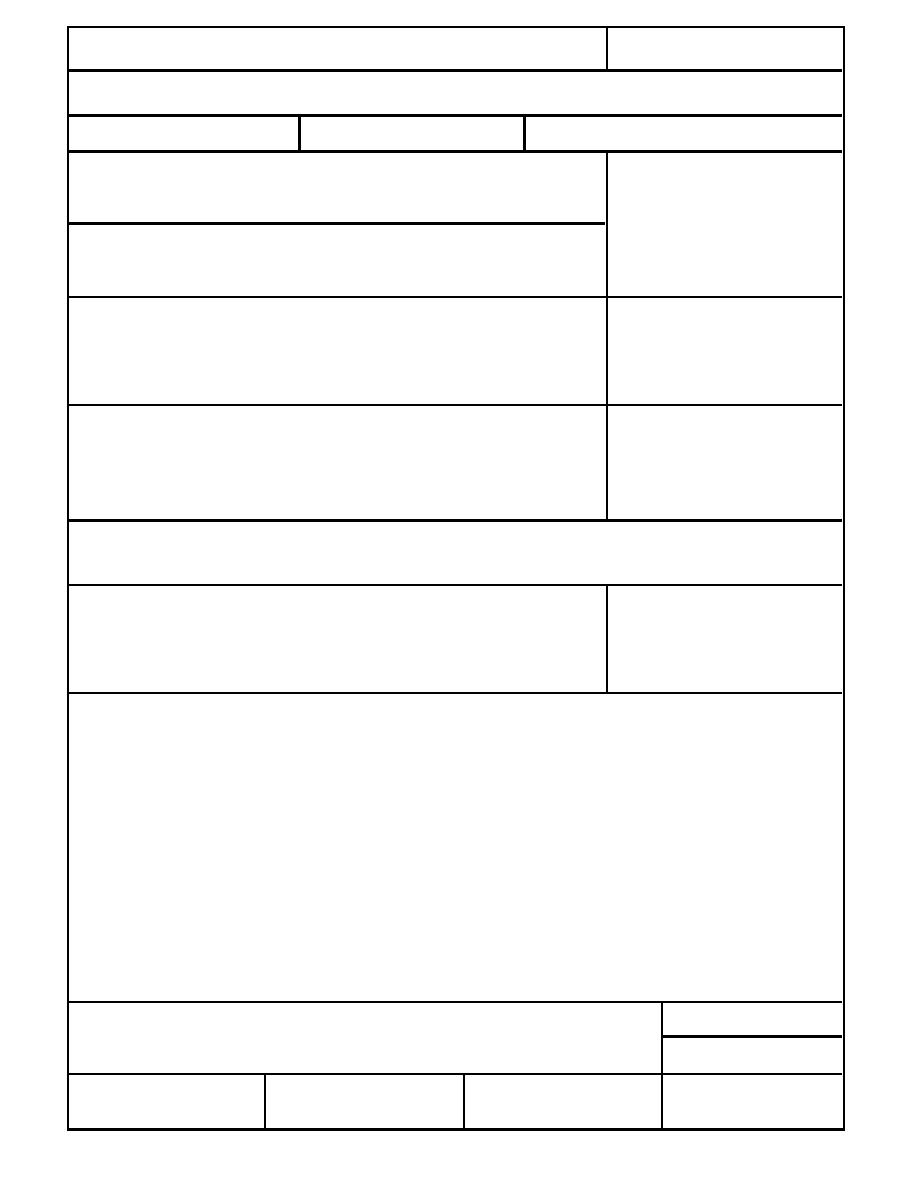
Form Approved
REPORT DOCUMENTATION PAGE
OMB No. 0704-0188
Public reporting burden for this collection of information is estimated to average 1 hour per response, including the time for reviewing instructions, searching existing data sources, gathering and
maintaining the data needed, and completing and reviewing the collection of information. Send comments regarding this burden estimate or any other aspect of this collection of information,
including suggestion for reducing this burden, to Washington Headquarters Services, Directorate for Information Operations and Reports, 1215 Jefferson Davis Highway, Suite 1204, Arlington,
VA 22202-4302, and to the Office of Management and Budget, Paperwork Reduction Project (0704-0188), Washington, DC 20503.
1. AGENCY USE ONLY (Leave blank)
2. REPORT DATE
3. REPORT TYPE AND DATES COVERED
March 1999
4. TITLE AND SUBTITLE
5. FUNDING NUMBERS
Investigation of the Roosevelt Road Transmitter Site, Fort Richardson, Alaska,
Using Ground-Penetrating Radar
6. AUTHORS
Lewis E. Hunter, Allan J. Delaney, and Daniel E. Lawson
7. PERFORMING ORGANIZATION NAME(S) AND ADDRESS(ES)
8. PERFORMING ORGANIZATION
REPORT NUMBER
CRREL Report 99-4
U.S. Army Cold Regions Research and Engineering Laboratory
72 Lyme Road
Hanover, New Hampshire 03755
9. SPONSORING/MONITORING AGENCY NAME(S) AND ADDRESS(ES)
10. SPONSORING/MONITORING
AGENCY REPORT NUMBER
Directorate of Public Works
U.S. Army Alaska
Fort Richardson
11. SUPPLEMENTARY NOTES
For conversion of SI units to non-SI units of measurement, consult ASTM Standard E380-93, Standard Practice for Use of the International
System of Units, published by the American Society for Testing and Materials, 100 Barr Harbor Drive, West Conshohocken, Pa. 19428-2959.
12a. DISTRIBUTION/AVAILABILITY STATEMENT
12b. DISTRIBUTION CODE
Approved for public release; distribution is unlimited.
Available from NTIS, Springfield, Virginia 22161
13. ABSTRACT (Maximum 200 words)
The Roosevelt Road Transmitter Site is the location of a decommissioned bunker on Fort Richardson, near Anchor-
age, Alaska. The site was used from World War II to the Korean War as part of an Alaskan communications net-
work. The bunker and support buildings were vandalized following its decommissioning in the mid-1960s, result-
ing in PCB contamination of the bunker and soils around the above-ground transmitter annex. CRREL conducted
a ground-penetrating radar (GPR) investigation of the site in June 1996, at the request of the Directorate of Public
Works on Fort Richardson. Nine transect lines were established, each being profiled with 100- and 400-MHz anten-
nas. Both antennas systems defined the extent of the bunker and identified the presence of buried utilidors. The
100-MHz antenna provided large-scale resolution of the bunker, limits of site excavation, and large stratigraphic
horizons in the undisturbed sediments. The 400-MHz antenna provided finer resolution that allowed identifica-
tion of steel reinforcement in the bunker ceiling, utilidor walls and floor, and the walls of the inner and outer
bunker. High amplitude resonance and hyperbolas in the record characterize the response from the Transmitter
Annex foundation, buried pipes, and utilities. The GPR survey shows its utility for detecting the extent of aban-
doned underground structures and identifying the extent of original ground excavations.
14. SUBJECT TERMS
15. NUMBER OF PAGES
Alaska
Ground-penetrating radar (GPR)
23
Fort Richardson
Site investigation
16. PRICE CODE
Geophysical mapping
Tunnel detection
17. SECURITY CLASSIFICATION
18. SECURITY CLASSIFICATION
19. SECURITY CLASSIFICATION
20. LIMITATION OF ABSTRACT
OF REPORT
OF THIS PAGE
OF ABSTRACT
UNCLASSIFIED
UNCLASSIFIED
UNCLASSIFIED
UL
Standard Form 298 (Rev. 2-89)
NSN 7540-01-280-5500
Prescribed by ANSI Std. Z39-18
298-102




 Previous Page
Previous Page
